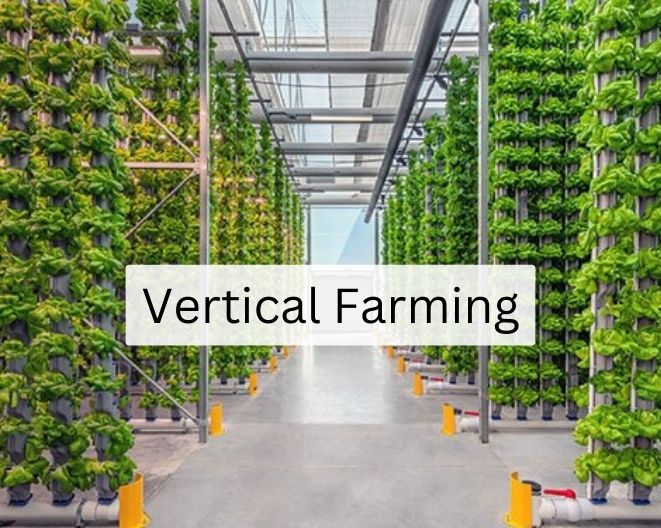Tomatoes are one of the most beloved crops found both at home gardens and commercial agriculture facilities alike, beloved for their vibrant colors, juicy texture, and sweet taste. While planting tomatoes alone won’t guarantee optimal growth or maximize yields; companion planting with suitable companion plants plays a critical role. It improves soil health, deterring pests from attacking, and improving plant vigor overall. In this comprehensive guide on Companion Plants for Tomatoes, we’ll delve into this exciting world, discovering which companion species help promote healthier growth for greater yield.
Understanding Companion Plants for Tomatoes
Companion plants, or companion species, are species planted nearby for mutual benefits, in this case, for tomatoes, they can improve soil fertility, attract beneficial insects to attract beneficial bugs away, repel pests away, and provide structural support – creating an ecosystem in the garden which fosters optimal tomato growth while increasing productivity overall. By strategically choosing these companion plants gardeners can foster optimal tomato development while increasing overall garden production.
Wages Companion Plants Can Produce
Companion Plants for Tomatoes offers multiple advantages, including:
Pest Control:
Certain companion plants produce natural compounds or odors that repel common tomato pests like aphids, whiteflies, and nematodes; interplanting these species alongside tomatoes helps gardeners reduce pest pressure while decreasing chemical pesticide needs.
Nutrient Cycling:
Some companion plants possess deep root systems or require specific nutrients that complement those of tomatoes, providing gardeners with an opportunity to improve soil structure, increase nutrient availability, and strengthen overall soil health by intercropping these species together.
Pollination:
Companion plants typically produce flowers that attract pollinators like bees and butterflies to improve pollination rates and enhance fruit set on tomato plants, leading to greater yields overall. By inviting beneficial insects like these into their gardens, gardeners can increase pollination rates while simultaneously increasing fruit set rates, leading to improved pollination and fruit set rates resulting in improved fruit set rates as well.
Weed Suppression:
Companion plants with dense foliage or rapid growth rates can help suppress weed growth by shading the soil and competing for resources, thus decreasing manual weeding needs and helping create a clean garden bed.
Ideal Companion Plants for Tomatoes
When it comes to cultivating successful tomatoes, selecting appropriate companion plants can have a tremendous effect on their development and health. Here are a few ideal choices as Companion Plants for Tomatoes:
Basil (Ocimum basilicum):
Basil is an ideal companion plant for tomatoes as its aromatic oils help repel common tomato pests like aphids, whiteflies, and hornworms – as well as adding an enhanced taste! Basil’s aromatic oils also help enhance tomato flavors when grown together.
Marigold (Tagetes spp.):
Marigolds contain compounds that repel nematodes that threaten tomato roots. Planting marigolds alongside tomato plants can help repel such infestations and boost overall soil health.
Nasturtiums (Tropaeolum majus):
Nasturtiums have long been recognized for their ability to attract aphids away from tomato plants, providing effective pest management solutions. Furthermore, these flowers feature shallow roots which prevent erosion while improving moisture retention – two additional advantages when growing nasturtiums as part of an integrated gardening solution.
Chives (Allium schoenoprasum):
Chives contain sulfur compounds that effectively repel aphids, making them an invaluable partner plant in tomato gardens. Furthermore, pollinators such as bees and butterflies visit them, increasing fruit sets while simultaneously improving yields.
Borage (Borago officinalis):
It makes an ideal companion plant for tomatoes due to its ability to draw pollinators while simultaneously deterring tomato hornworms. Borage flowers attract bees while its foliage contains compounds that repel pests.
French Marigolds (Tagetes patula):
These flowers produce chemicals to repel nematodes, making them the ideal companion plant for tomatoes. French marigolds may help shield roots from damage caused by nematodes as well as improve overall soil health.
Calendula (Calendula officinalis):
Pot marigold or calendula attracts beneficial insects such as hoverflies and ladybugs which feed on common tomato pests. While its edible flowers may be added to salads or steeped into tea for use as garnish.
By selecting and planting appropriate Companion Plants for Tomatoes, gardeners can foster an ecosystem that supports plant health. When implemented properly in tomato gardens, companion planting offers numerous advantages; creating more biodiversity can improve plant health while simultaneously deterring pests and improving productivity overall.
Implementing Companion Planting in the Tomato Garden
Implementing companion planting in a tomato garden involves several key steps for its successful implementation:
- Choose Companion Plants for Tomatoes that offer benefits beyond what tomatoes alone provide. Take into account such factors as plant height, growth habits, and nutritional requirements to ensure compatibility between your selections and tomato plants.
- Scattered companion plants among tomato rows or planting them at various intervals is the easiest way to maximize their impact and create an ecosystem rich with diversity. Rotate companion plants regularly to prevent pests or disease build-up while simultaneously increasing soil fertility.
- Mulch your companion plants to protect them from weeds, retain moisture, and maintain an ideal soil temperature. Organic materials such as straw leaves or compost may even add nutrients back into the soil for increased soil health benefits.
- Be mindful when tending to your tomato garden and keep an eye out for any changes to pest populations, plant growth, or overall garden health that might necessitate adjustments as needed.
- Be adaptable in your companion planting strategies based on what you learn in the garden, experimenting with various combinations to find what best works.
By following these steps, gardeners can successfully incorporate companion planting into their tomato gardens. Further, you can opt for different planting techniques for your tomato garden such as vertical farming, hydroponic tomato farming, etc.
Conclusion
Companion Plants for Tomatoes offers numerous advantages for gardeners seeking to maximize tomato growth and yield. By interplanting species that repel pests, attract pollinators, and improve soil health with one another, gardeners can form an ecosystem that promotes optimal tomato plant development and yields. Experiment with different companion plants within your tomato garden until you discover which combination best matches up with the conditions. Companion planting will enable you to cultivate healthy, productive tomato plants that yield bountiful harvest season after season!
FAQs
What are good companion plants with tomatoes?
Good companion plants for tomatoes include basil, marigolds, nasturtiums, garlic, onions, peppers, lettuce, and carrots. These plants help repel pests, attract beneficial insects, and improve soil health when grown alongside tomatoes.
What are the ideal growing conditions for tomato plants?
Tomato plants thrive in full sunlight, well-draining soil rich in organic matter, and consistent moisture. They prefer daytime temperatures between 70-85°F (21-29°C) and nighttime temperatures above 60°F (15°C). Adequate spacing, good air circulation, and proper support structures are also essential for healthy tomato growth.
What is the best way to support growing tomatoes?
The best way to support growing tomatoes is by using stakes, cages, or trellises. Staking involves tying the main stem of the tomato plant to a sturdy wooden or metal stake as it grows. Caging involves placing a wire cage around the tomato plant to support its growth. Trellising involves training the tomato plant to climb up a vertical structure, such as a wooden or metal trellis.
How do I maximize my tomato plants?
To maximize tomato plant growth and yield, provide adequate sunlight, water, and nutrients. Prune tomato plants regularly to remove suckers and improve air circulation. Mulch around the base of the plants to retain moisture and suppress weeds. Fertilize tomato plants with a balanced fertilizer high in phosphorus to promote flowering and fruit development. Finally, harvest ripe tomatoes promptly to encourage continuous fruit production.





